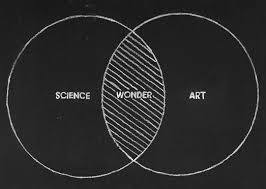
9 October 2015 – 9 October 2015 – In my neuroscience program at Cambridge I came across a relatively new area of scientific research called neuro-aesthetics, which is the study of art by neuroscientists. The goal is to understanding what art really is, that art can be tested by brain imaging experiments, to explore the biological basis of aesthetic experience.
The purpose of art, to me, is not merely to depict or represent reality for that can be accomplished very easily with a camera. It is to enhance, transcend, or indeed even to distort reality. What the artist tries to do (either consciously or unconsciously) is to not only capture the essence of something but also to amplify it in order to more powerfully activate the same neural mechanisms that would be activated by the original object.
And if I have learned anything in this program it that we are not just our brains. We are much more complicated organism. Yes, we are designed by nature, but nature may not be completely physical in a classic sense, so neuroscience cannot alone explain ourselves. But art sometimes can.
I came across a piece in the New York Times by Alva Noë, a philosopher at the University of California, Berkeley, who is the author of “Strange Tools: Art and Human Nature” which makes the case for thinking of works of art as tools for investigating ourselves.
Here is that article (click here).